As technology continues to play a critical role in the success of businesses, software development has become an increasingly important aspect of IT. However, some countries are struggling with a shortage of skilled software professionals, making it challenging to attract developers, driving up salaries, and costs of operations. To address this issue, various solutions have been proposed, such as outsourcing, hiring remote team members, partnering with offshore development companies, or establishing subsidiaries in countries with an adequate supply of developers. Each approach has its advantages and drawbacks for the parent organisation. In this report, we explore how staffing solutions and resourcing strategies in this field are changing, based on the feedback from 50 IT leaders and managers. If you anticipate or are already facing resource challenges in software engineering, this report will provide valuable insights.
Understanding the software skills crunch
What’s the state of the software skills crunch? We wanted the answer, so we collaborated with CIO WaterCooler and Freeform Dynamics to produce the CIO Pulse Report.
The report aims to help organisations navigate this software skills crunch in the IT industry. It explores the reasons behind the skills shortage, offers solutions, and provides insights into how companies can bolster their recruiting processes with remote or offshore teams.
We found that many parts of the world are still experiencing a severe shortage of software skills. It’s especially present in developed economies where salaries are prohibitively high, yet the focus on IT education, infrastructure, and resources is low. Nevertheless, this is expected to change in 2023, and beyond.
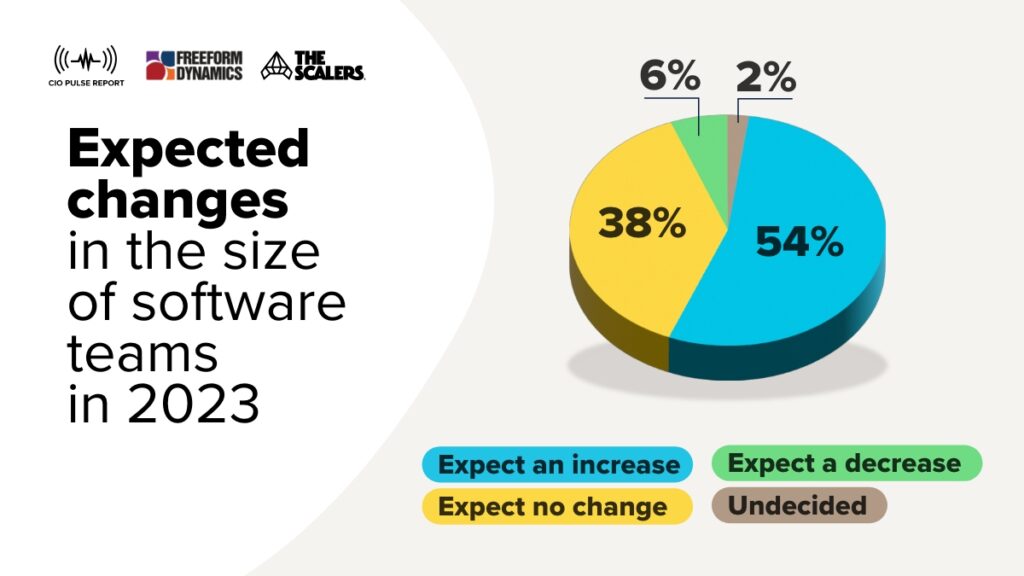
Key finding: The importance of offshoring with the right partner
The growing demand for skilled IT talent has made finding the right candidates challenging for many companies. 52% of IT leaders say they need help finding suitable offshore talent. However, this is not the case in emerging tech economies like India, which have made the IT sector an issue of national interest and continued investment.
The survey found that most software teams already have developers working from home, at least part of the time. This means, moving away from a local ‘in-house’ team is not only a reality for these companies, it’s an inevitability. In this blog, we will take a deeper look at the findings.
Benefits and challenges of remote and offshore teams
The software skills crunch has increasingly made remote and offshore solutions more appealing due to access to a larger pool of talent with diverse skills and experience, faster time-to-market with 24/7 development cycles, increased flexibility to scale their software development teams as needed, and often more cost-effective solutions. At the same time, organisations rightfully have many concerns over possible obstacles they might face when adopting remote and offshore teams.
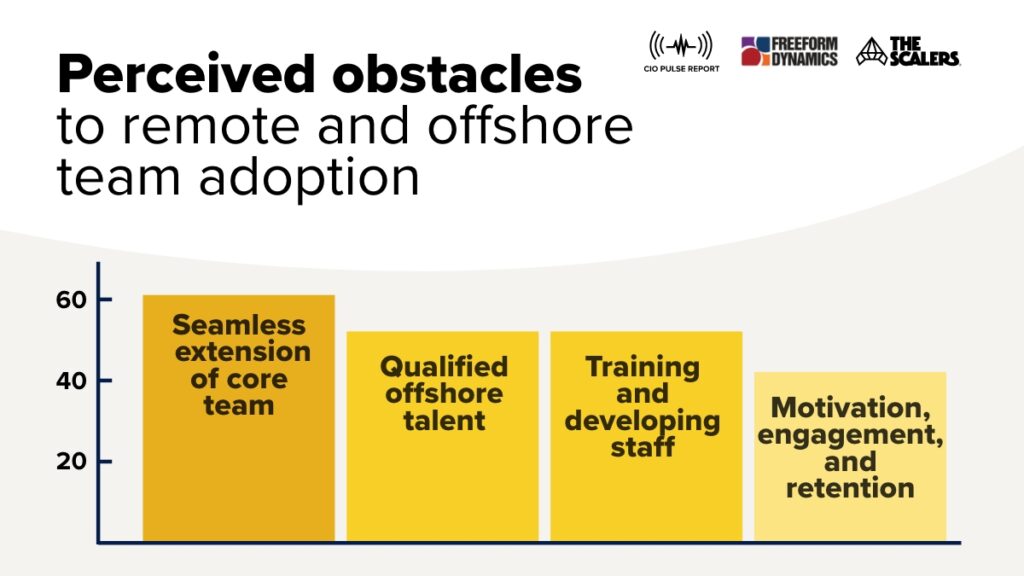
However, companies can overcome these challenges with the right offshore development partner. 25% of IT leaders are already fully leveraging remote and offshore staff availability and cost benefits, whereas 31% have adoption or expansion plans that include it.
According to the report, most IT leaders source software developers through a traditional in-house model and only occasionally use overseas contractors. However, this is rapidly changing as remote and offshore developers refine their processes and adopt more improved best practices.
Best practices for working with remote and offshore teams
When considering an offshore vendor, there are several best practices to keep in mind. One of the key strategies is to train and manage offshore staff as part of the core team, to ensure that they are fully integrated into the company’s operations and culture. Motivating and retaining offshore staff is also important to ensure that they remain committed and productive over the long term. Integrating offshore and local teams operationally and culturally is another essential step, and developing a plan to establish a branded presence can help to build trust with customers and stakeholders. It is also important to tackle organisational challenges quickly, particularly as companies grow and face new obstacles.
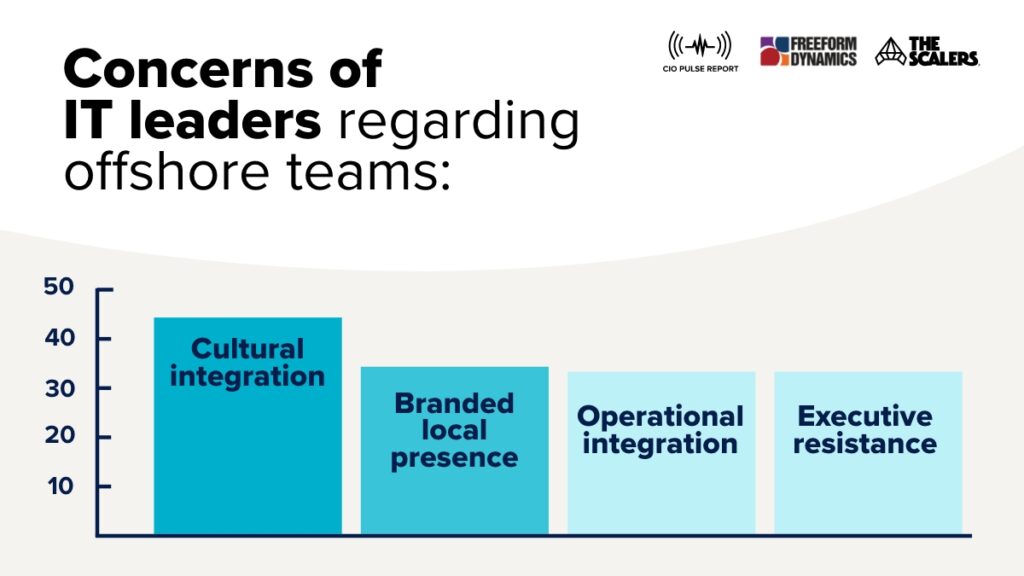
IT leaders have many concerns about the software skills crunch and selecting a remote and offshore model, but by following these best practices, companies can maximise the benefits of working with offshore vendors while minimising the risks and challenges. Even though the in-house model dominates, remote and offshore partners offer solutions to many problems companies face. They can help companies address their organisational concerns.
Trends and priorities in software delivery
Of the 50 IT leaders who were interviewed, most said that while cost controls and cost-effectiveness remain significant, delivering better, more secure software, more quickly is their top priority. This software delivery trend reflects an ever-increasing demand to keep software secure in spite of their rush to stay competitive by getting their products to market quickly. Security matters greatly to 51% of IT leaders, while only 25% think it’s not a priority.
Still, there isn’t a one-size fits all approach. The size of a company’s existing software team can significantly impact their priorities and expectations for software delivery. For instance, larger teams with over twenty employees often prioritise software delivery speed and enhanced features and functionality over getting to market. On the other hand, smaller teams may want to deliver software quickly, so they prioritise speed and efficiency to remain competitive. The data tell us that 73% of larger and 68% of smaller teams prioritise time to market.
Continuous improvement is the key to building better software for organisations and navigating the software skills crunch. This involves aligning their key priorities with their market strategies. For example, companies can implement agile methodologies, DevOps practices, and other tools and processes that promote speed and efficiency to address the need for faster software delivery.
Additionally, companies can invest in security testing, threat modelling, and other measures prioritising security throughout the software development lifecycle to meet the need for more secure software. The priorities for improving software delivery are evolving. Companies must keep their priorities straight to build better software and stay ahead of the curve in a fast-moving industry.
The biggest challenges facing software teams
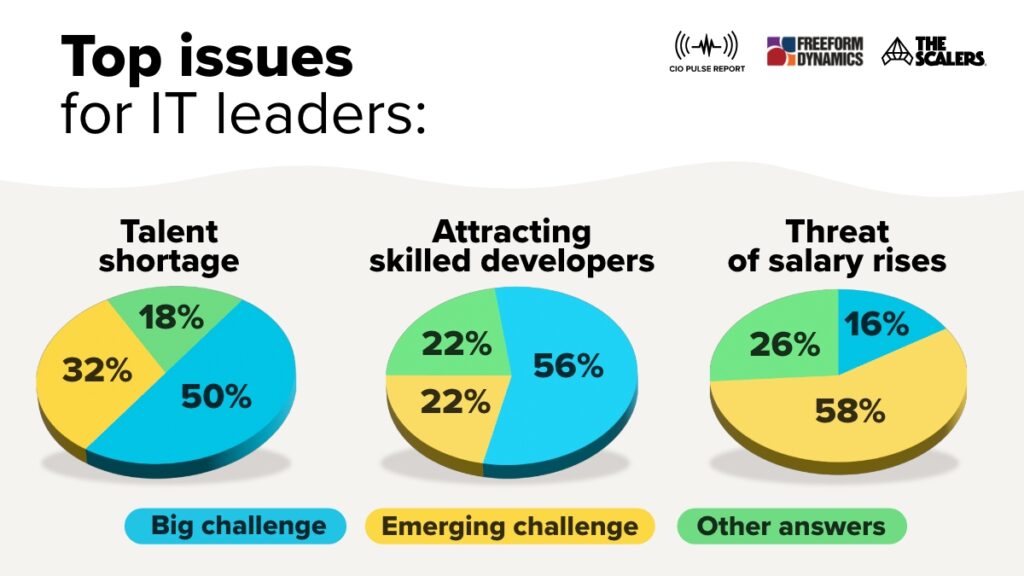
Lack of skilled talent
In the Western world, the demand for software developers seems to rise, but attracting and retaining top talent is becoming harder and harder. 50% of IT leaders report needing more skilled development staff, while 56% of respondents say they need help attracting these employees.
Increasing cost of living and rising salaries
While issues such as retention are less problematic than recruiting new talent, it may emerge as an equally difficult challenge in the near future. Currently, 24% of IT leaders say they have challenges retaining skilled development staff, while 16% say salaries are becoming a greater issue. The increasing cost of living and salary is becoming one of the biggest challenges facing companies when building software teams. In the tech industry, software engineers and developers are in high demand, and companies are willing to pay top dollar to attract and retain talent.
However, as the cost of living rises, so too do salaries. This can make it difficult for companies to attract and retain talent, in a cost-effective manner. As a result, many software firms are exploring alternative strategies to address this challenge, such as offshoring and remote teams overseas.
Maintenance of up-to-date capabilities
As developed economies become increasingly competitive, remote and offshore teams become more attractive and practical. Besides facing operational issues, ‘onshore’ teams often struggle with deficiencies in their visibility, planning, and optimisation methodologies, especially with regard to aligning development tools and processes. Many report that their developers lack sufficient knowledge — stating that their development lifecycle automation (DevOps) capabilities are not up to scratch.
These deficiencies can significantly impact a team’s ability to work efficiently and effectively, leading to slower development cycles and lower-quality software. It can also affect employee morale and job satisfaction. Lack of knowledge and expertise in development programs can lead to missed opportunities to adopt new technologies and practices that can improve software delivery.
Cultural integration issues
As more organisations turn to remote and offshore software teams, they can feel challenged by cultural integration issues. Creating a positive company culture offshore where people feel they have the same opportunities for professional development as their ‘onshore’ counterparts isn’t easy. However, the right partner will have a good methodology to challenge and reward employees for their hard work to help your company stand out.
The right offshore partner must be able to help you continuously evaluate your situation to stay competitive. This means investing in training and development programs, promoting knowledge-sharing and collaboration, and regularly reviewing and improving processes can help teams overcome these challenges and deliver high-quality software on time and on budget.
Why IT leaders report matters
The software skills crunch is real. Our report shows that a vast number of IT leaders are onboard with adopting remote and offshore teams or have already started rolling out their ambitious plans to do so. They are becoming a popular alternative to ‘onshore’ teams. A quarter of the IT leaders we surveyed have already fully adopted this approach to take advantage of staff availability and cost benefits in remote and offshore locations. And nearly a quarter have ongoing adoption activity or expansion plans that include it.
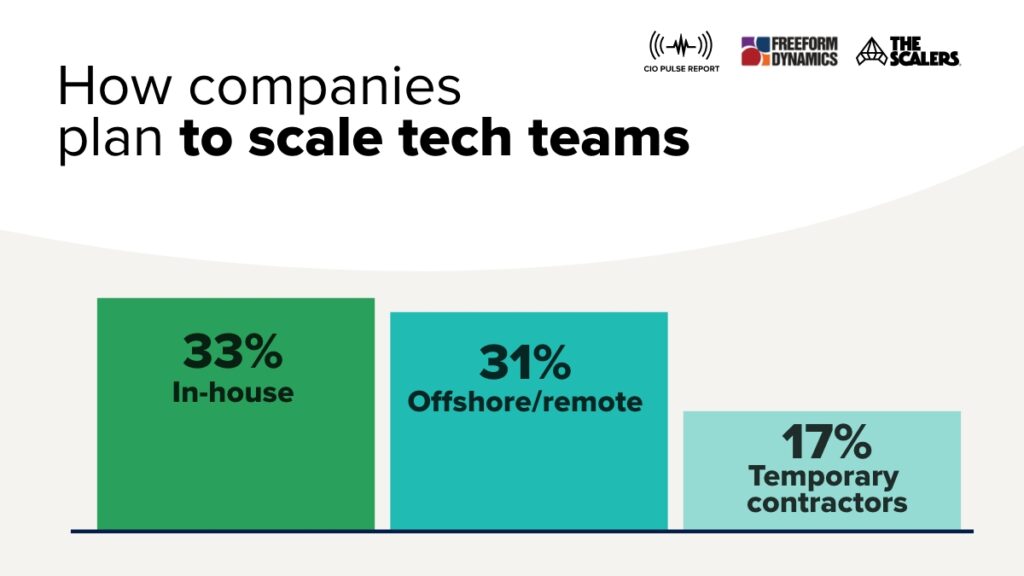
Remote and offshore teams offer great solutions to challenges traditional outsourcing can’t meet, such as defining specific needs, controlling and monitoring quality, or creating a loyal culture. Our report reveals the importance of choosing a partner that gives access to remote and offshore software engineering resources that prioritise organisational specific needs.
Build Your Team,
Not Just a Contract
With The Scalers’ offshore dedicated development team, you get engineers who join your workflow for the long run. Grow steadily, stay flexible, and work with people who care about the product as much as you do.








